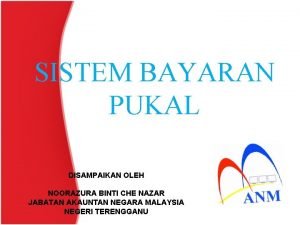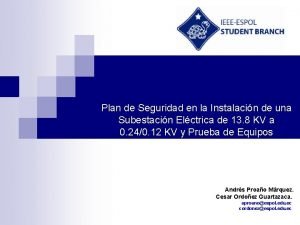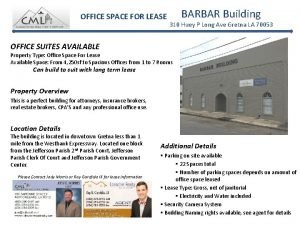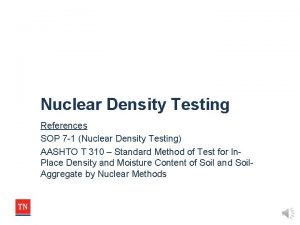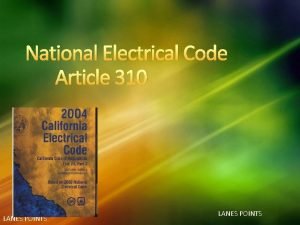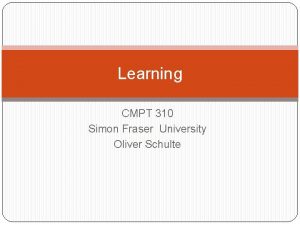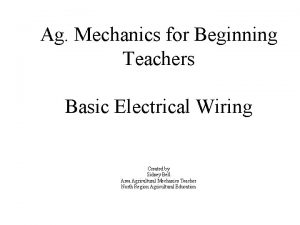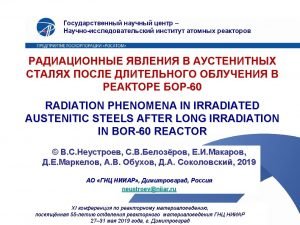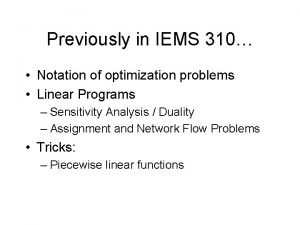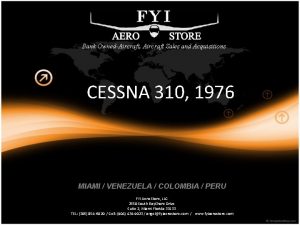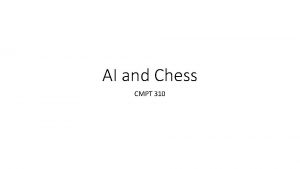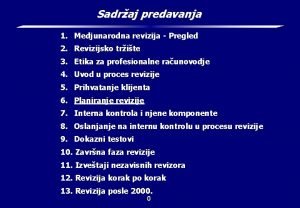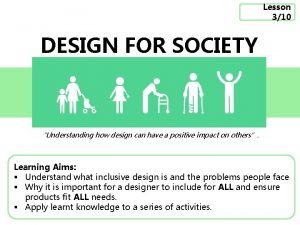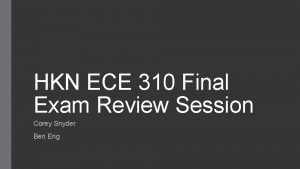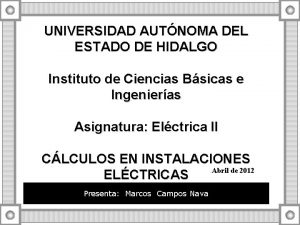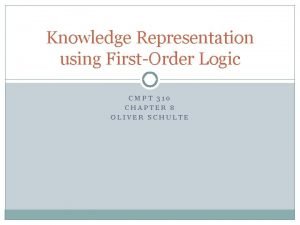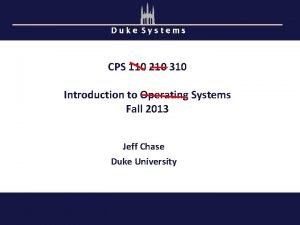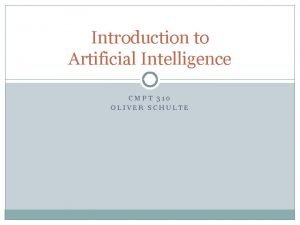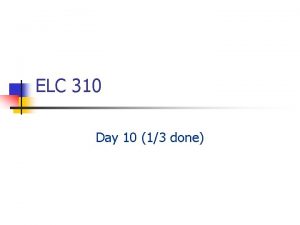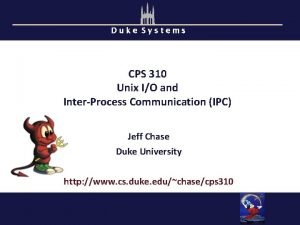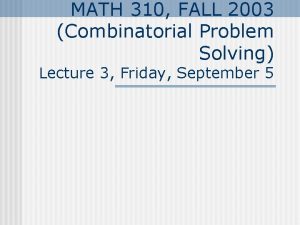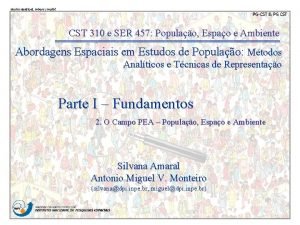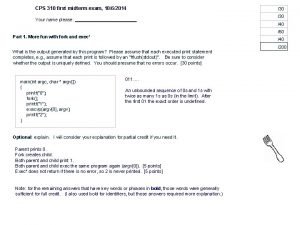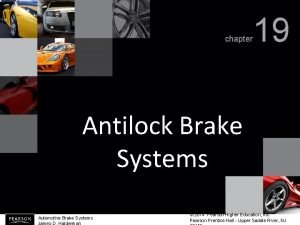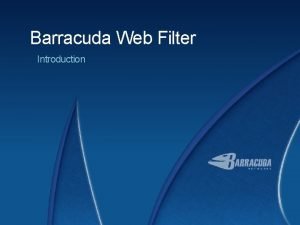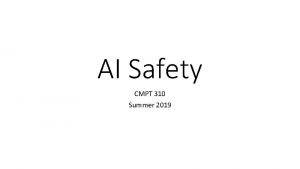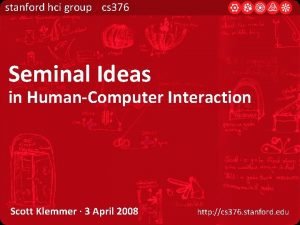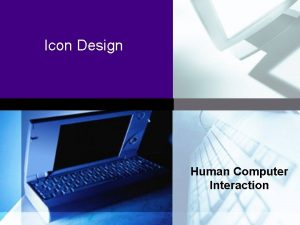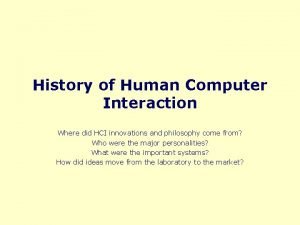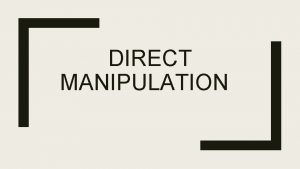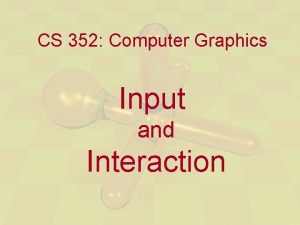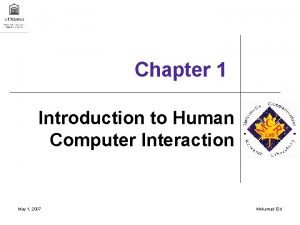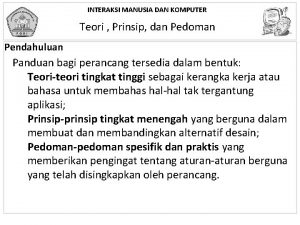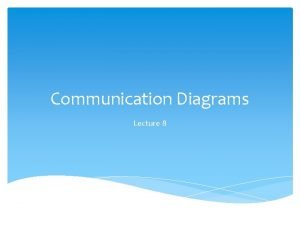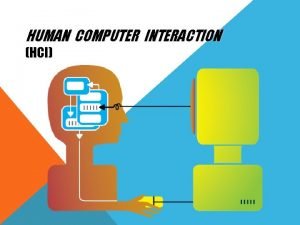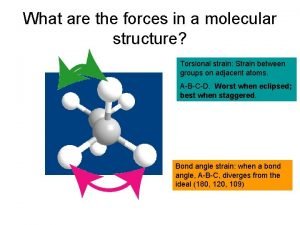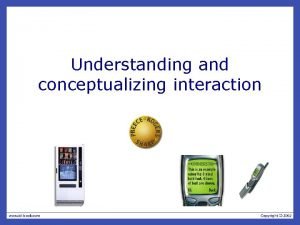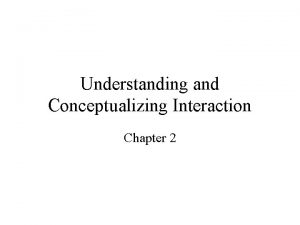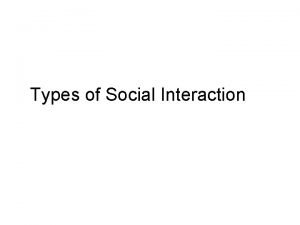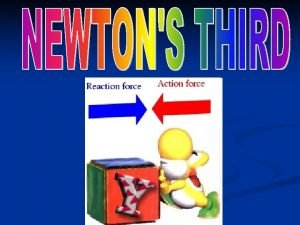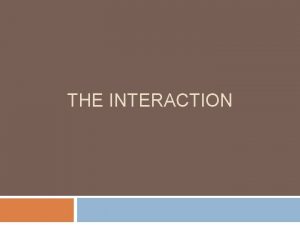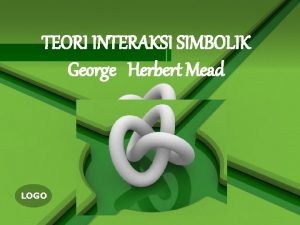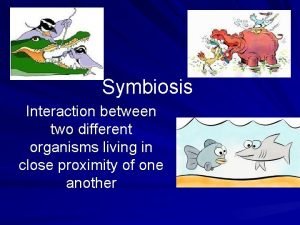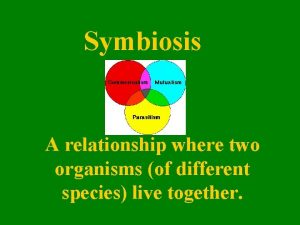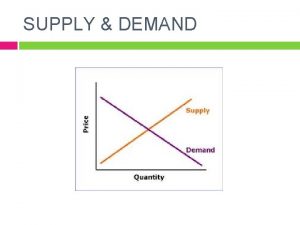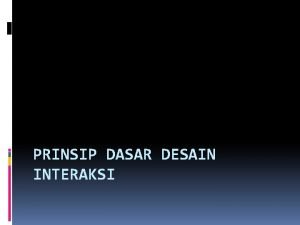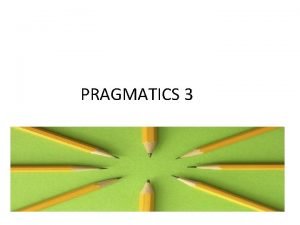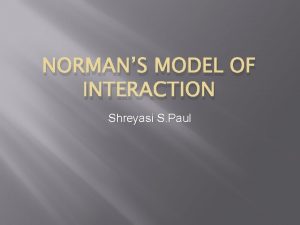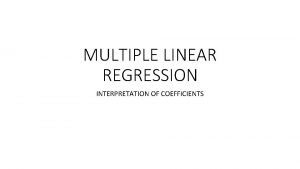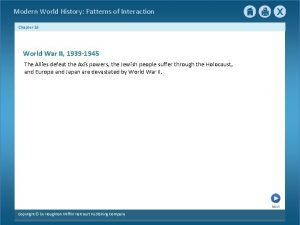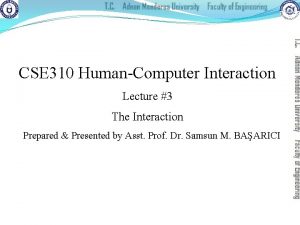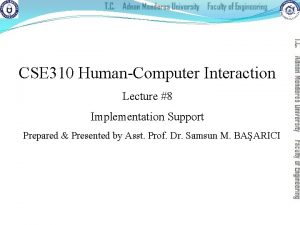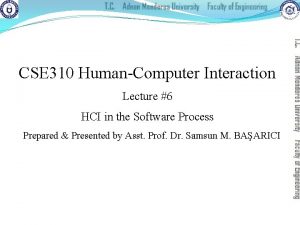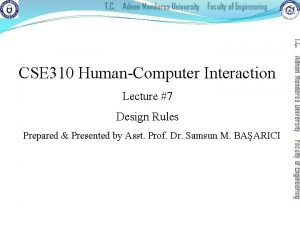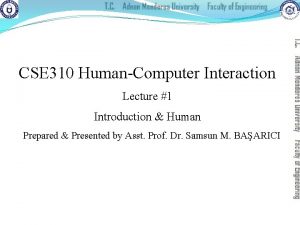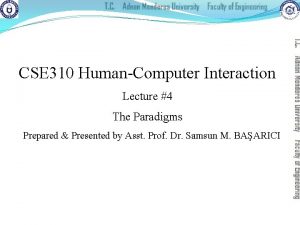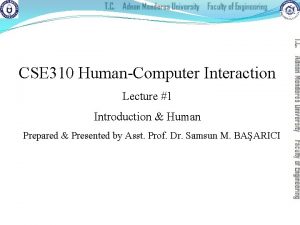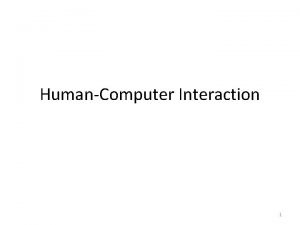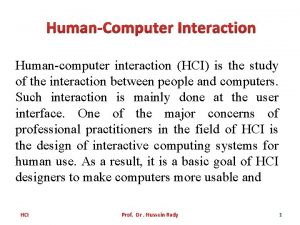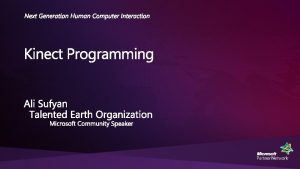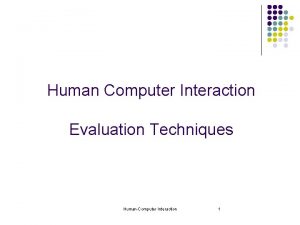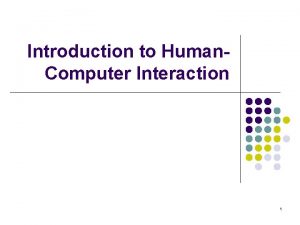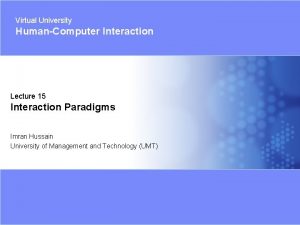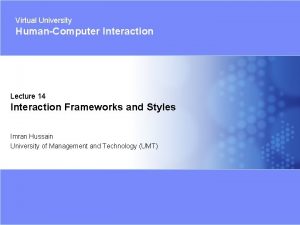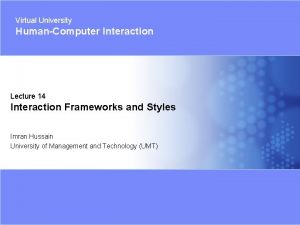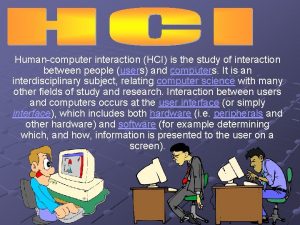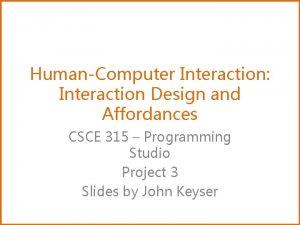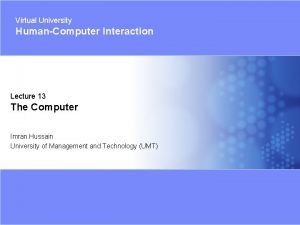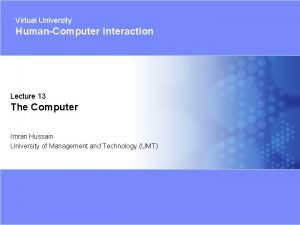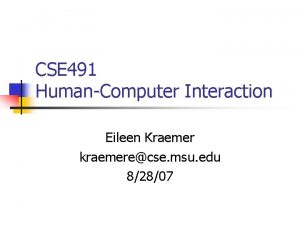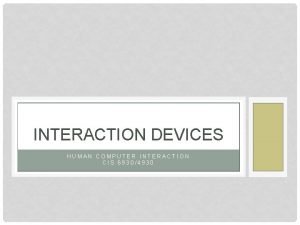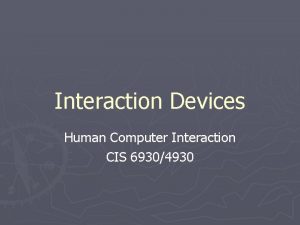CSE 310 HumanComputer Interaction Lecture 2 The Computer





























































































































- Slides: 125

CSE 310 Human-Computer Interaction Lecture #2 The Computer Prepared & Presented by Asst. Prof. Dr. Samsun M. BAŞARICI

Learning Objectives § Recall computer I/O, processing and storage device § Understand the impact of computer hard/software on HCI

The Computer a computer system is made up of various elements each of these elements affects the interaction � input devices – text entry and pointing � output devices – screen (small&large), digital paper � virtual reality – special interaction and display devices � physical interaction – e. g. sound, haptic, bio-sensing � paper – as output (print) and input (scan) � memory – RAM & permanent media, capacity & access � processing – speed of processing, networks

Interacting with computers to understand human–computer interaction … need to understand computers! what goes in and out devices, paper, sensors, etc. what can it do? memory, processing, networks

A ‘typical’ computer system ? § screen, or monitor, on which there are windows § keyboard § mouse/trackpad § variations � desktop � laptop � PDA the devices dictate the styles of interaction that the system supports If we use different devices, then the interface will support a different style of interaction

How many … § computers in your house? �hands up, … … none, 1, 2 , 3, more!! § computers in your pockets? are you thinking … … PC, laptop, PDA ? ?

How many computers … in your house? in your pockets? � PC � PDA � TV, VCR, DVD, Hi. Fi, � phone, camera cable/satellite TV � microwave, cooker, washing machine � central heating � security system can you think of more? � smart card, card with magnetic strip? � electronic car key � USB memory try your pockets and bags

Interactivity? Long ago in a galaxy far away … batch processing � punched card stacks or large data files prepared � long wait …. � line printer output … and if it is not right … Now most computing is interactive � rapid feedback � the user in control (most of the time) � doing rather than thinking … Is faster always better?

Richer interaction sensors and devices everywhere

text entry devices keyboards (QWERTY et al. ) chord keyboards, phone pads handwriting, speech

Keyboards § Most common text input device § Allows rapid entry of text by experienced users § Keypress closes connection, causing a character code to be sent § Usually connected by cable, but can be wireless

layout – QWERTY § Standardised layout but … � non-alphanumeric keys are placed differently � accented symbols needed for different scripts � minor differences between UK and USA keyboards § QWERTY arrangement not optimal for typing – layout to prevent typewriters jamming! § Alternative designs allow faster typing but large social base of QWERTY typists produces reluctance to change.

QWERTY (cont. )

alternative keyboard layouts Alphabetic � keys arranged in alphabetic order � not faster for trained typists � not faster for beginners either! Dvorak � common letters under dominant fingers � biased towards right hand � common combinations of letters alternate between hands � 10 -15% improvement in speed and reduction in fatigue � But - large social base of QWERTY typists produce market pressures not to change

special keyboards § designs to reduce fatigue for RSI § for one handed use e. g. the Maltron left-handed keyboard

Chord keyboards only a few keys - four or 5 letters typed as combination of keypresses compact size – ideal for portable applications short learning time – keypresses reflect letter shape fast – once you have trained BUT - social resistance, plus fatigue after extended use NEW – niche market for some wearables

phone pad and T 9 entry § use numeric keys with multiple presses 2 – a b c 3 - d e f 4 - g h i 5 - j k l 6 - m n o 7 - p q r s 8 - t u v 9 - w x y z hello = 4433555[pause]555666 surprisingly fast! § T 9 predictive entry � type as if single key for each letter � use dictionary to ‘guess’ the right word � hello = 43556 … � but 26 -> menu ‘am’ or ‘an’

Handwriting recognition § Text can be input into the computer, using a pen and a digesting tablet � natural interaction § Technical problems: � capturing all useful information - stroke path, pressure, etc. in a natural manner � segmenting joined up writing into individual letters � interpreting individual letters � coping with different styles of handwriting § Used in PDAs, and tablet computers … … leave the keyboard on the desk!

Speech recognition § Improving rapidly § Most successful when: � single user – initial training and learns peculiarities � limited vocabulary systems § Problems with � external noise interfering � imprecision of pronunciation � large vocabularies � different speakers

Numeric keypads § for entering numbers quickly: �calculator, PC keyboard § for telephones not the same!! ATM like phone 1 2 3 7 8 9 4 5 6 7 8 9 1 2 3 * 0 # 0 . = telephone calculator

positioning, pointing and drawing mouse, touchpad trackballs, joysticks etc. touch screens, tablets eyegaze, cursors

the Mouse § Handheld pointing device �very common �easy to use § Two characteristics �planar movement �buttons (usually from 1 to 3 buttons on top, used for making a selection, indicating an option, or to initiate drawing etc. )

the mouse (cont. ) Mouse located on desktop � requires physical space � no arm fatigue Relative movement only is detectable. Movement of mouse moves screen cursor Screen cursor oriented in (x, y) plane, mouse movement in (x, z) plane … … an indirect manipulation device. � device itself doesn’t obscure screen, is accurate and fast. � hand-eye coordination problems for novice users

How does it work? Two methods for detecting motion § Mechanical � Ball on underside of mouse turns as mouse is moved � Rotates orthogonal potentiometers � Can be used on almost any flat surface § Optical � light emitting diode on underside of mouse � may use special grid-like pad or just on desk � less susceptible to dust and dirt � detects fluctuating alterations in reflected light intensity to calculate relative motion in (x, z) plane

Even by foot … § some experiments with the footmouse � controlling mouse movement with feet … � not very common : -) § but foot controls are common elsewhere: � car pedals � sewing machine speed control � organ and piano pedals

Touchpad § small touch sensitive tablets § ‘stroke’ to move mouse pointer § used mainly in laptop computers § good ‘acceleration’ settings important � fast stroke � lots of pixels per inch moved � initial movement to the target � slow stroke � less pixels per inch � for accurate positioning

Trackball and thumbwheels Trackball � ball is rotated inside static housing � like an upsdie down mouse! � relative motion moves cursor � indirect device, fairly accurate � separate buttons for picking � very fast for gaming � used in some portable and notebook computers. Thumbwheels … � for accurate CAD – two dials for X-Y cursor position � for fast scrolling – single dial on mouse

Joystick and keyboard nipple Joystick � indirect pressure of stick = velocity of movement � buttons for selection on top or on front like a trigger � often used for computer games aircraft controls and 3 D navigation Keyboard nipple � for laptop computers � miniature joystick in the middle of the keyboard

Touch-sensitive screen § Detect the presence of finger or stylus on the screen. � works by interrupting matrix of light beams, capacitance changes or ultrasonic reflections � direct pointing device § Advantages: � fast, and requires no specialised pointer � good for menu selection � suitable for use in hostile environment: clean and safe from damage. § Disadvantages: � finger can mark screen � imprecise (finger is a fairly blunt instrument!) � difficult to select small regions or perform accurate drawing � lifting arm can be tiring

Stylus and light pen Stylus � small pen-like pointer to draw directly on screen � may use touch sensitive surface or magnetic detection � used in PDA, tablets PCs and drawing tables Light Pen � now rarely used � uses light from screen to detect location BOTH … � very direct and obvious to use � but can obscure screen

Digitizing tablet § Mouse like-device with cross hairs § used on special surface - rather like stylus § very accurate - used for digitizing maps

Eyegaze § control interface by eye gaze direction � e. g. look at a menu item to select it § uses laser beam reflected off retina � … a very low power laser! § § mainly used for evaluation (ch x) potential for hands-free control high accuracy requires headset cheaper and lower accuracy devices available sit under the screen like a small webcam

Cursor keys § § Four keys (up, down, left, right) on keyboard. Very, very cheap, but slow. Useful for not much more than basic motion for text-editing tasks. No standardised layout, but inverted “T”, most common

Discrete positioning controls § in phones, TV controls etc. �cursor pads or mini-joysticks �discrete left-right, up-down �mainly for menu selection

display devices bitmap screens (CRT & LCD) large & situated displays digital paper

bitmap displays § screen is vast number of coloured dots

resolution and colour depth § Resolution … used (inconsistently) for � number of pixels on screen (width x height) � e. g. SVGA 1024 x 768, PDA perhaps 240 x 400 � density of pixels (in pixels or dots per inch - dpi) � typically between 72 and 96 dpi § Aspect ratio � ration between width and height � 4: 3 for most screens, 16: 9 for wide-screen TV § Colour depth: � how many different colours for each pixel? � black/white or greys only � 256 from a pallete � 8 bits each for red/green/blue = millions of colours

anti-aliasing Jaggies � diagonal lines that have discontinuities in due to horizontal raster scan process. Anti-aliasing � softens edges by using shades of line colour � also used for text

Cathode ray tube § Stream of electrons emitted from electron gun, focused and directed by magnetic fields, hit phosphor-coated screen which glows § used in TVs and computer monitors

Health hazards of CRT ! X-rays: largely absorbed by screen (but not at rear!) UV- and IR-radiation from phosphors: insignificant levels Radio frequency emissions, plus ultrasound (~16 k. Hz) Electrostatic field - leaks out through tube to user. Intensity dependant on distance and humidity. Can cause rashes. § Electromagnetic fields (50 Hz-0. 5 MHz). Create induction currents in conductive materials, including the human body. Two types of effects attributed to this: visual system - high incidence of cataracts in VDU operators, and concern over reproductive disorders (miscarriages and birth defects). § §

Health hints … § § § do not sit too close to the screen do not use very small fonts do not look at the screen for long periods without a break do not place the screen directly in front of a bright window work in well-lit surroundings « Take extra care if pregnant. but also posture, ergonomics, stress

Liquid crystal displays § Smaller, lighter, and … no radiation problems. § Found on PDAs, portables and notebooks, … and increasingly on desktop and even for home TV § also used in dedicted displays: digital watches, mobile phones, Hi. Fi controls § How it works … � � Top plate transparent and polarised, bottom plate reflecting. Light passes through top plate and crystal, and reflects back to eye. Voltage applied to crystal changes polarisation and hence colour N. B. light reflected not emitted => less eye strain

special displays Random Scan (Directed-beam refresh, vector display) � draw the lines to be displayed directly � no jaggies � lines need to be constantly redrawn � rarely used except in special instruments Direct view storage tube (DVST) � Similar to random scan but persistent => no flicker � Can be incrementally updated but not selectively erased � Used in analogue storage oscilloscopes

large displays § used for meetings, lectures, etc. § technology plasma – usually wide screen video walls – lots of small screens together projected – RGB lights or LCD projector – – hand/body obscures screen may be solved by 2 projectors + clever software back-projected – frosted glass + projector behind

situated displays § displays in ‘public’ places � large or small � very public or for small group § display only � for information relevant to location § or interactive � use stylus, touch sensitive screem § in all cases … the location matters � meaning of information or interaction is related to the location

Hermes a situated display small displays beside office doors handwritten notes left using stylus office owner reads notes using web interface

Digital paper § what? appearance � thin flexible sheets � updated electronically � but retain display § how? � small spheres turned � or channels with coloured liquid and contrasting spheres � rapidly developing area cross section

virtual reality and 3 D interaction positioning in 3 D space moving and grasping seeing 3 D (helmets and caves)

positioning in 3 D space § cockpit and virtual controls � steering wheels, knobs and dials … just like real! § the 3 D mouse � six-degrees of movement: x, y, z + roll, pitch, yaw § data glove � fibre optics used to detect finger position § VR helmets � detect head motion and possibly eye gaze § whole body tracking � accelerometers strapped to limbs or reflective dots and video processing

pitch, yaw and roll yaw pitch roll

3 D displays § desktop VR �ordinary screen, mouse or keyboard control �perspective and motion give 3 D effect § seeing in 3 D �use stereoscopic vision �VR helmets �screen plus shuttered specs, etc.

VR headsets § small TV screen for each eye § slightly different angles § 3 D effect

VR motion sickness § time delay �move head … lag … display moves �conflict: head movement vs. eyes § depth perception �headset gives different stereo distance �but all focused in same plane �conflict: eye angle vs. focus § conflicting cues => sickness �helps motivate improvements in technology

simulators and VR caves § § § scenes projected on walls realistic environment hydraulic rams! real controls other people

physical controls, sensors etc. special displays and gauges sound, touch, feel, smell physical controls environmental and bio-sensing

dedicated displays § analogue representations: �dials, gauges, lights, etc. § digital displays: �small LCD screens, LED lights, etc. § head-up displays �found in aircraft cockpits �show most important controls … depending on context

Sounds § beeps, bongs, clonks, whistles and whirrs § used for error indications § confirmation of actions e. g. keyclick also see chapter 10

Touch, feel, smell § touch and feeling important �in games … vibration, force feedback �in simulation … feel of surgical instruments �called haptic devices § texture, smell, taste �current technology very limited

BMW i. Drive § § for controlling menus feel small ‘bumps’ for each item makes it easier to select options by feel uses haptic technology from Immersion Corp.

physical controls § specialist controls needed … �industrial controls, consumer products, etc. easy-clean smooth buttons large buttons multi-function control clear dials tiny buttons

Environment and bio-sensing § sensors all around us �car courtesy light – small switch on door �ultrasound detectors – security, washbasins �RFID security tags in shops �temperature, weight, location § … and even our own bodies … �iris scanners, body temperature, heart rate, galvanic skin response, blink rate

paper: printing and scanning print technology fonts, page description, WYSIWYG scanning, OCR

Printing § image made from small dots �allows any character set or graphic to be printed, § critical features: �resolution � size and spacing of the dots � measured in dots per inch (dpi) �speed � usually measured in pages per minute �cost!!

Types of dot-based printers § dot-matrix printers � use inked ribbon (like a typewriter � line of pins that can strike the ribbon, dotting the paper. � typical resolution 80 -120 dpi § ink-jet and bubble-jet printers � tiny blobs of ink sent from print head to paper � typically 300 dpi or better. § laser printer � like photocopier: dots of electrostatic charge deposited on drum, which picks up toner (black powder form of ink) rolled onto paper which is then fixed with heat � typically 600 dpi or better.

Printing in the workplace § shop tills � dot matrix � same print head used for several paper rolls � may also print cheques § thermal printers � special heat-sensitive paper � paper heated by pins makes a dot � poor quality, but simple & low maintenance � used in some fax machines

Fonts § Font – the particular style of text Courier font Helvetica font Palatino font Times Roman font § §´µº¿ �Ä¿~� (special symbol) § Size of a font measured in points (1 pt about 1/72”) (vaguely) related to its height This is ten point Helvetica This is twelve point This is fourteen point This is eighteen point and this is twenty-four point

Fonts (cont. ) Pitch � fixed-pitch – every character has the same width e. g. Courier � variable-pitched – some characters wider e. g. Times Roman – compare the ‘i’ and the “m” Serif or Sans-serif � sans-serif – square-ended strokes e. g. Helvetica � serif – with splayed ends (such as) e. g. Times Roman or Palatino

Readability of text § lowercase �easy to read shape of words § UPPERCASE �better for individual letters and non-words e. g. flight numbers: BA 793 vs. ba 793 § serif fonts �helps your eye on long lines of printed text �but sans serif often better on screen

Page Description Languages § Pages very complex � different fonts, bitmaps, lines, digitised photos, etc. § Can convert it all into a bitmap and send to the printer … but often huge ! § Alternatively Use a page description language � sends a description of the page can be sent, � instructions for curves, lines, text in different styles, etc. � like a programming language for printing! § Post. Script is the most common

Screen and page § WYSIWYG � what you see is what you get � aim of word processing, etc. § but … � screen: 72 dpi, landscape image � print: 600+ dpi, portrait § can try to make them similar but never quite the same § so … need different designs, graphics etc, for screen and print

Scanners § Take paper and convert it into a bitmap § Two sorts of scanner � flat-bed: paper placed on a glass plate, whole page converted into bitmap � hand-held: scanner passed over paper, digitising strip typically 3 -4” wide § Shines light at paper and note intensity of reflection � colour or greyscale § Typical resolutions from 600– 2400 dpi

Scanners (cont. ) Used in � desktop publishing for incorporating photographs and other images � document storage and retrieval systems, doing away with paper storage + special scanners for slides and photographic negatives

Optical character recognition § OCR converts bitmap back into text § different fonts �create problems for simple “template matching” algorithms �more complex systems segment text, decompose it into lines and arcs, and decipher characters that way § page format �columns, pictures, headers and footers

Paper-based interaction § paper usually regarded as output only § can be input too – OCR, scanning, etc. § Xerox Paper. Works � glyphs – small patterns of /\//\ � � used to identify forms etc. used with scanner and fax to control applications § more recently � papers micro printed - like wattermarks � identify which sheet and where you are � special ‘pen’ can read locations � know where they are writing

memory short term and long term speed, capacity, compression formats, access

Short-term Memory - RAM § Random access memory (RAM) � on silicon chips � 100 nano-second access time � usually volatile (lose information if power turned off) � data transferred at around 100 Mbytes/sec § Some non-volatile RAM used to store basic set-up information § Typical desktop computers: 64 to 256 Mbytes RAM

Long-term Memory - disks § magnetic disks � floppy disks store around 1. 4 Mbytes � hard disks typically 40 Gbytes to 100 s of Gbytes access time ~10 ms, transfer rate 100 kbytes/s § optical disks � use lasers to read and sometimes write � more robust that magnetic media � CD-ROM - same technology as home audio, ~ 600 Gbytes � DVD - for AV applications, or very large files

Blurring boundaries § PDAs �often use RAM for their main memory § Flash-Memory �used in PDAs, cameras etc. �silicon based but persistent �plug-in USB devices for data transfer

speed and capacity § what do the numbers mean? § some sizes (all uncompressed) … � this book, text only ~ 320, 000 words, 2 Mb � the Bible ~ 4. 5 Mbytes � scanned page ~ 128 Mbytes � (11 x 8 inches, 1200 dpi, 8 bit greyscale) � digital photo ~ 10 Mbytes � (2– 4 mega pixels, 24 bit colour) � video ~ 10 Mbytes per second � (512 x 512, 12 bit colour, 25 frames per sec)

virtual memory § Problem: � running lots of programs + each program large � not enough RAM § Solution - Virtual memory : � store some programs temporarily on disk � makes RAM appear bigger § But … swapping � program on disk needs to run again � copied from disk to RAM � s l o w s t h i n g s d o w n

Compression § reduce amount of storage required § lossless � recover exact text or image – e. g. GIF, ZIP � look for commonalities: � text: AAAAABBBBBCCCC 10 A 5 B 8 C � video: compare successive frames and store change § lossy � recover something like original – e. g. JPEG, MP 3 � exploit perception � JPEG: lose rapid changes and some colour � MP 3: reduce accuracy of drowned out notes

Storage formats - text § ASCII - 7 -bit binary code for to each letter and character § UTF-8 - 8 -bit encoding of 16 bit character set § RTF (rich text format) - text plus formatting and layout information § SGML (standardized generalised markup language) - documents regarded as structured objects § XML (extended markup language) - simpler version of SGML for web applications

Storage formats - media § Images: � many storage formats : (Post. Script, GIFF, JPEG, TIFF, PICT, etc. ) � plus different compression techniques (to reduce their storage requirements) § Audio/Video � again lots of formats : (Quick. Time, MPEG, WAV, etc. ) � compression even more important � also ‘streaming’ formats for network delivery

methods of access § large information store � long time to search => use index � what you index -> what you can access § simple index needs exact match § forgiving systems: � Xerox “do what I mean” (DWIM) � SOUNDEX – Mc. Cloud ~ Mac. Cleod § access without structure … � free text indexing (all the words in a document) � needs lots of space!!

processing and networks finite speed (but also Moore’s law) limits of interaction networked computing

Finite processing speed § Designers tend to assume fast processors, and make interfaces more and more complicated § But problems occur, because processing cannot keep up with all the tasks it needs to do � cursor overshooting because system has buffered keypresses � icon wars - user clicks on icon, nothing happens, clicks on another, then system responds and windows fly everywhere § Also problems if system is too fast - e. g. help screens may scroll through text much too rapidly to be read

Moore’s law § computers get faster and faster! § 1965 … � Gordon Moore, co-founder of Intel, noticed a pattern � processor speed doubles every 18 months � PC … 1987: 1. 5 Mhz, 2002: 1. 5 GHz § similar pattern for memory � but doubles every 12 months!! � hard disk … 1991: 20 Mbyte : 2002: 30 Gbyte § baby born today � record all sound and vision � by 70 all life’s memories stored in a grain of dust! /e 3/online/moores-law/

the myth of the infinitely fast machine § implicit assumption … no delays an infinitely fast machine § what is good design for real machines? § good example … the telephone : � type keys too fast � hear tones as numbers sent down the line � actually an accident of implementation � emulate in deisgn

Limitations on interactive performance Computation bound � Computation takes ages, causing frustration for the user Storage channel bound � Bottleneck in transference of data from disk to memory Graphics bound � Common bottleneck: updating displays requires a lot of effort - sometimes helped by adding a graphics co-processor optimised to take on the burden Network capacity � Many computers networked - shared resources and files, access to printers etc. - but interactive performance can be reduced by slow network speed

Networked computing Networks allow access to … � large memory and processing � other people (groupware, email) � shared resources – esp. the web Issues � network delays – slow feedback � conflicts - many people update data � unpredictability

The internet § history … � 1969: DARPANET US Do. D, 4 sites � 1971: 23; 1984: 1000; 1989: 10000 § common language (protocols): � TCP – Transmission Control protocol � lower level, packets (like letters) between machines � IP – Internet Protocol � reliable channel (like phone call) between programs on machines � email, HTTP, all build on top of these

Next Lecture The Interaction

References § Alan Dix, Janet Finlay, Gregory D. Abowd, Russell Beale, “Human-Computer Interaction, 3 rd Edition”, Prentice Hall, 2004, ISBN: 0 -13 -046109 -1 § Samsun M. Başarıcı, Erkan Özefe; “Visuelle Programmierung für die Bildverarbeitung”, VDM Verlag Dr. Müller, 2013

Additional Material: History of Computers

First machines § § § ≈ 2400 BC Babylon Chinese Greeks Romans etc. Addition, substraction, multiplication, square root, cube root

Computer ? § Term „Computer“: � 1646: Sir Thomas Browne (1605 -1682) �Author �Medicine �Religion �Science �Esoteric

Computers? § 3 Lines �Formalization �Calculization �Mechanization

Ages of Automata § 17 th Century § France § Clocks, watches, etc.

Upcoming of mechanical machines § 1623: Wilhelm Schickard (1592 -1635) �German professor for biblical languages �Mathematics �Astronomy �First draft of a „computer“

Upcoming of mechanical machines § 1642: Blaise Pascal (1623 -1662) �French inventor, mathematician, physicist, religious philosopher �First mechanical machine for computing: Pascaline

Pascaline § 2 coupled sets of each 6 dials § Each dial with 10 digits (0, …, 9) § Correct handling of carry § Only addition and substraction

Upcoming of mechanical machines § 1671: Gottlieb Wilhelm Freiherr von Leibniz (1646 -1716) �German philosopher, scientist, mathematician, physicist, etc. �Improvement of Pascaline

Big Improvements § Charles Babbage (1792 -1871) �English mathematician, philosopher, mechanical engineer

Difference Engine (1823) § Calculating tables for navigation § Solving polynomials

Analytical Engine (1834) § Designed to perform any mathematical operation �Mill (ALU) � Control unit � Output Unit

Analytical Engine (1834) § Branching �Jumping forward/backward § Programming �First Programmer: Ada Byron Lovelace

Programming? § Idea (1805): Weaving loom of Joseph-Marie Jacquard (1752 -1834)

New Age § Z 1 (1934): Konrad Zuse (1910 -1995)

New Age § Z 1 (1934): Konrad Zuse (1910 -1995) �First try

New Age �Z 3 (1941): First Computer of the world �Binary represantation of commands and numbers �Binary switching elements for storage and processing �Usage of predicate calculus (AND, OR, NOT) �Floating point represantation of numbers �Electromagnetical relays (600 for ALU, 1400 for storage units, 64 for 22 bit words) �Program-controlled (8 channel punch stripes) �Speed: � 3 seconds for multiplication, division, root extraction

New Age �Z 3 (1941): First Computer of the world �Binary represantation of commands and numbers �Binary switching elements for storage and processing �Usage of predicate calculus (AND, OR, NOT) �Floating point represantation of numbers �Electromagnetical relays (600 for ALU, 1400 for storage units, 64 for 22 bit words) �Program-controlled (8 channel punch stripes) �Speed: � 3 seconds for multiplication, division, root extraction

New Age § Harvard Mark I-Automatic Sequence Controlled Computer ASCC (1944): Howard Hathaway Aiken (19001973) at Harvard University Cambridge/Massachusets � 17 m � 5 tons �Similar Z 3 but output also on punched cards

John von neumann (1903 -1957) § 1945 �“First Draft of a Report on the EDVAC” �Concepts of Modern Computer Architecture (von Neumann Architecture): � ALU � CU � Storage � I/O

ENIAC § Electronic Numerical Integrator and Computer (1946) �Build by: John Presper Eckert (1919 -1995) and John William Mauchly (1907 -1980) � Vacuum tubes instead of mechanical storage elements � 1000 times faster than MARK I � 3 m. high � 300 m 2 � Tubes has to be changed every 2 -3 days

ENIAC § Programming ENIAC: � 6000 switches �Organize wire connections �Run a while �Stop computer �Reorganize wire connections �ENIAC-Girls

ENIAC § Main features of ENIAC: � 17468 vacuum tubes � 1500 relays � 174 k. W power � 30 t weight � 0. 2 ms addition time � 2. 8 ms multiplication time

EDVAC (1945) § Electronic Discrete Variable Automatic Computer § Build by John von Neumann �Modified ENIAC �Data and programs in same storage

Small steps § 1951: First commercial computer by Eckert and Mauchly (Rand Corp. ) �UNIVAC „Universal Automatic Computer“ § 1954: IBM introduced FORTRAN „Formula Translator“ developed by J. W. Backus § 1963: ASCII „American Standard Code for Information Interchange“

A New Era § 1958 and 1959: Jack Kilby (1923 -2005) (Texas Instruments) and Robert Noyce (1927 -1990) (Fairchild Semiconductors) developed independently the integrated circuits IC § 1968: Gordon Moore (1929 -) and Robert Noyce (both from Fairchild Semiconductors) incorporated Intel (Integrated Electronics) Corporation

A New Era § 1969: Datapoint Co. ordered Intel to build an IC for Datapoint 2200 screen controller § 1971: Intel 4004 (predecessor of all Pentium processors)

A New Era § 1972: Intel 8008 �Successor of 4004 � 8 bit data bus � 14 bit adress bus �Commands for addition, substraction, and logic commands implemented

A New Era § 1974: Many different 8 bit processors with 64 k. Byte address space �Intel 8080 �Motorola MC 6800 �Intel 8085 �Zilog Z 80 �etc. § Modern processors � 32 or 64 bit data and address bus

Typical PC system

History of Computing Hardware Calculators Antikythera mechanism, Difference Engine, Norden bombsight Programmable Devices Jacquard loom, Analytical Engine, Harvard Mark I, Z 3 Calculators Atanasoff – Berry Computer, IBM 604, UNIVAC 60, UNIVAC 120 Programmable Devices ENIAC, EDSAC, EDVAC, UNIVAC I, IBM 701, IBM 702, IBM 650, Z 22 First Generation (Mechanical/Electromechanical) Second Generation (Vacuum Tubes)

History of Computing Hardware Third Generation (Discrete transistors and SSI, MSI, LSI Integrated circuits) Fourth Generation (VLSI integrated circuits) Theoretical/experimental Mainframes IBM 7090, IBM 7080, System/360, BUNCH Minicomputer PDP-8, PDP-11, System/32, System/36 Minicomputer VAX, AS/400 4 -bit microcomputer Intel 4004, Intel 4040 8 -bit microcomputer Intel 8008, Intel 8080, Motorola 6809, MOS Technology 6502, Zilog Z 80 16 -bit microcomputer 8088, Zilog Z 8000, WDC 65816/65802 32 -bit microcomputer 80386, Pentium, 68000, ARM architecture 64 -bit microcomputer x 86 -64, Power. PC, MIPS, SPARC Embedded computer 8048, 8051 Personal computer Desktop computer, Home computer, Laptop computer, Personal digital assistant (PDA), Portable computer, Tablet computer, Wearable computer Quantum computer, Chemical computer, DNA computing, Optical computer, Spintronics based computer
 01:640:244 lecture notes - lecture 15: plat, idah, farad
01:640:244 lecture notes - lecture 15: plat, idah, farad Kew 310
Kew 310 Falla trifasica
Falla trifasica 310 huey p long
310 huey p long Aashto t 310
Aashto t 310 310-16 table
310-16 table Sfu cmpt 310
Sfu cmpt 310 Split duplex receptacle symbol
Split duplex receptacle symbol Gervais worm snake
Gervais worm snake 3-5/310
3-5/310 Iems 310
Iems 310 Bank owned aircraft
Bank owned aircraft Ai 310
Ai 310 Isa 310
Isa 310 Lesson 310
Lesson 310 Direct form 2 structure
Direct form 2 structure 101 310
101 310 Tablas para conductores conoflam
Tablas para conductores conoflam Cmpt 310
Cmpt 310 Cps 110
Cps 110 Cpsc 310
Cpsc 310 La 310
La 310 Oliver schulte sfu
Oliver schulte sfu Elc 310
Elc 310 Cps 310
Cps 310 Math 310-1
Math 310-1 Pgcst
Pgcst Cps 310
Cps 310 Kelsey-hayes abs schematic
Kelsey-hayes abs schematic Barracuda web filter 310
Barracuda web filter 310 Cmpt 310 summer 2021
Cmpt 310 summer 2021 Mgmt 411 purdue
Mgmt 411 purdue Stanford human computer interaction
Stanford human computer interaction Hci icon
Hci icon What are paradigms in hci
What are paradigms in hci Human outputs
Human outputs Interaction framework in hci
Interaction framework in hci Example of direct manipulation
Example of direct manipulation Interaction in computer graphics
Interaction in computer graphics Hci chapter 1
Hci chapter 1 Uhcd adalah
Uhcd adalah Prinsip imk
Prinsip imk Interaction design syllabus
Interaction design syllabus Pengertian human computer interaction
Pengertian human computer interaction Alan dix hci
Alan dix hci Communication diagrams
Communication diagrams Ergonomics in human computer interaction
Ergonomics in human computer interaction Hci adalah
Hci adalah Computer security 161 cryptocurrency lecture
Computer security 161 cryptocurrency lecture Computer-aided drug design lecture notes
Computer-aided drug design lecture notes Computer architecture notes
Computer architecture notes Isa vs microarchitecture
Isa vs microarchitecture Hát kết hợp bộ gõ cơ thể
Hát kết hợp bộ gõ cơ thể Ng-html
Ng-html Bổ thể
Bổ thể Tỉ lệ cơ thể trẻ em
Tỉ lệ cơ thể trẻ em Voi kéo gỗ như thế nào
Voi kéo gỗ như thế nào Thang điểm glasgow
Thang điểm glasgow Hát lên người ơi alleluia
Hát lên người ơi alleluia Các môn thể thao bắt đầu bằng tiếng đua
Các môn thể thao bắt đầu bằng tiếng đua Thế nào là hệ số cao nhất
Thế nào là hệ số cao nhất Các châu lục và đại dương trên thế giới
Các châu lục và đại dương trên thế giới Cong thức tính động năng
Cong thức tính động năng Trời xanh đây là của chúng ta thể thơ
Trời xanh đây là của chúng ta thể thơ Mật thư tọa độ 5x5
Mật thư tọa độ 5x5 Phép trừ bù
Phép trừ bù độ dài liên kết
độ dài liên kết Các châu lục và đại dương trên thế giới
Các châu lục và đại dương trên thế giới Thể thơ truyền thống
Thể thơ truyền thống Quá trình desamine hóa có thể tạo ra
Quá trình desamine hóa có thể tạo ra Một số thể thơ truyền thống
Một số thể thơ truyền thống Cái miệng nó xinh thế
Cái miệng nó xinh thế Vẽ hình chiếu vuông góc của vật thể sau
Vẽ hình chiếu vuông góc của vật thể sau Nguyên nhân của sự mỏi cơ sinh 8
Nguyên nhân của sự mỏi cơ sinh 8 đặc điểm cơ thể của người tối cổ
đặc điểm cơ thể của người tối cổ Thứ tự các dấu thăng giáng ở hóa biểu
Thứ tự các dấu thăng giáng ở hóa biểu Vẽ hình chiếu đứng bằng cạnh của vật thể
Vẽ hình chiếu đứng bằng cạnh của vật thể Phối cảnh
Phối cảnh Thẻ vin
Thẻ vin đại từ thay thế
đại từ thay thế điện thế nghỉ
điện thế nghỉ Tư thế ngồi viết
Tư thế ngồi viết Diễn thế sinh thái là
Diễn thế sinh thái là Dot
Dot Các số nguyên tố
Các số nguyên tố Tư thế ngồi viết
Tư thế ngồi viết Lời thề hippocrates
Lời thề hippocrates Thiếu nhi thế giới liên hoan
Thiếu nhi thế giới liên hoan ưu thế lai là gì
ưu thế lai là gì Khi nào hổ mẹ dạy hổ con săn mồi
Khi nào hổ mẹ dạy hổ con săn mồi Sự nuôi và dạy con của hươu
Sự nuôi và dạy con của hươu Sơ đồ cơ thể người
Sơ đồ cơ thể người Từ ngữ thể hiện lòng nhân hậu
Từ ngữ thể hiện lòng nhân hậu Thế nào là mạng điện lắp đặt kiểu nổi
Thế nào là mạng điện lắp đặt kiểu nổi Objectives of computer
Objectives of computer Difference between a computer and computer system
Difference between a computer and computer system Computer input devices drawing
Computer input devices drawing Basic structure of computer in computer organization
Basic structure of computer in computer organization Computer architecture vs computer organization
Computer architecture vs computer organization Complete computer description in computer organization
Complete computer description in computer organization Flow chart for interrupt cycle
Flow chart for interrupt cycle Gauche interaction in chair conformation
Gauche interaction in chair conformation What is real time interaction management
What is real time interaction management Total physical interaction
Total physical interaction What is problem space in interaction design
What is problem space in interaction design Interaction styles in hci
Interaction styles in hci Conceptualizing interaction
Conceptualizing interaction Example of cooperation in social interaction
Example of cooperation in social interaction In every action there is an interaction
In every action there is an interaction Extension of norman, and has 4 interaction framework
Extension of norman, and has 4 interaction framework Logo interaction
Logo interaction Parasitism relationship
Parasitism relationship Close interaction between two different organisms
Close interaction between two different organisms Commensalism examples
Commensalism examples Interaction of demand and supply
Interaction of demand and supply It is a lifelong process of social interaction.
It is a lifelong process of social interaction. Social interaction in everyday life
Social interaction in everyday life Difference between social action and social interaction pdf
Difference between social action and social interaction pdf Contoh desain
Contoh desain Negative politeness examples
Negative politeness examples Interaction faible
Interaction faible Why do organisms interact with other organisms
Why do organisms interact with other organisms Normans model
Normans model What is the interaction term in regression
What is the interaction term in regression World history patterns of interaction solutions
World history patterns of interaction solutions Modelling rich interaction
Modelling rich interaction

